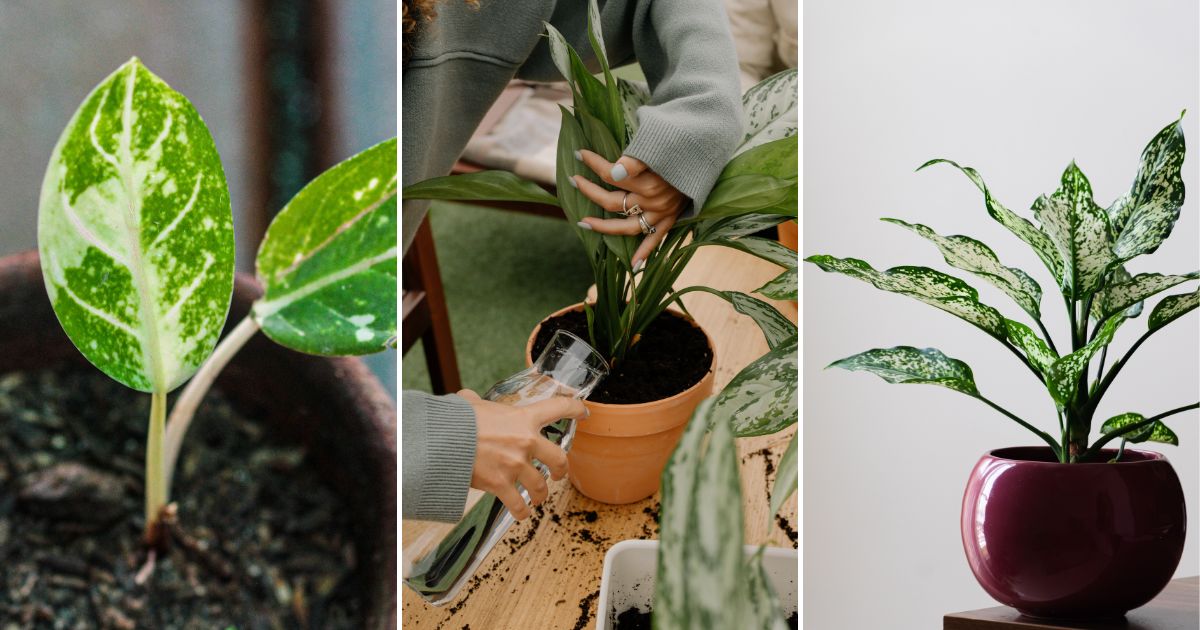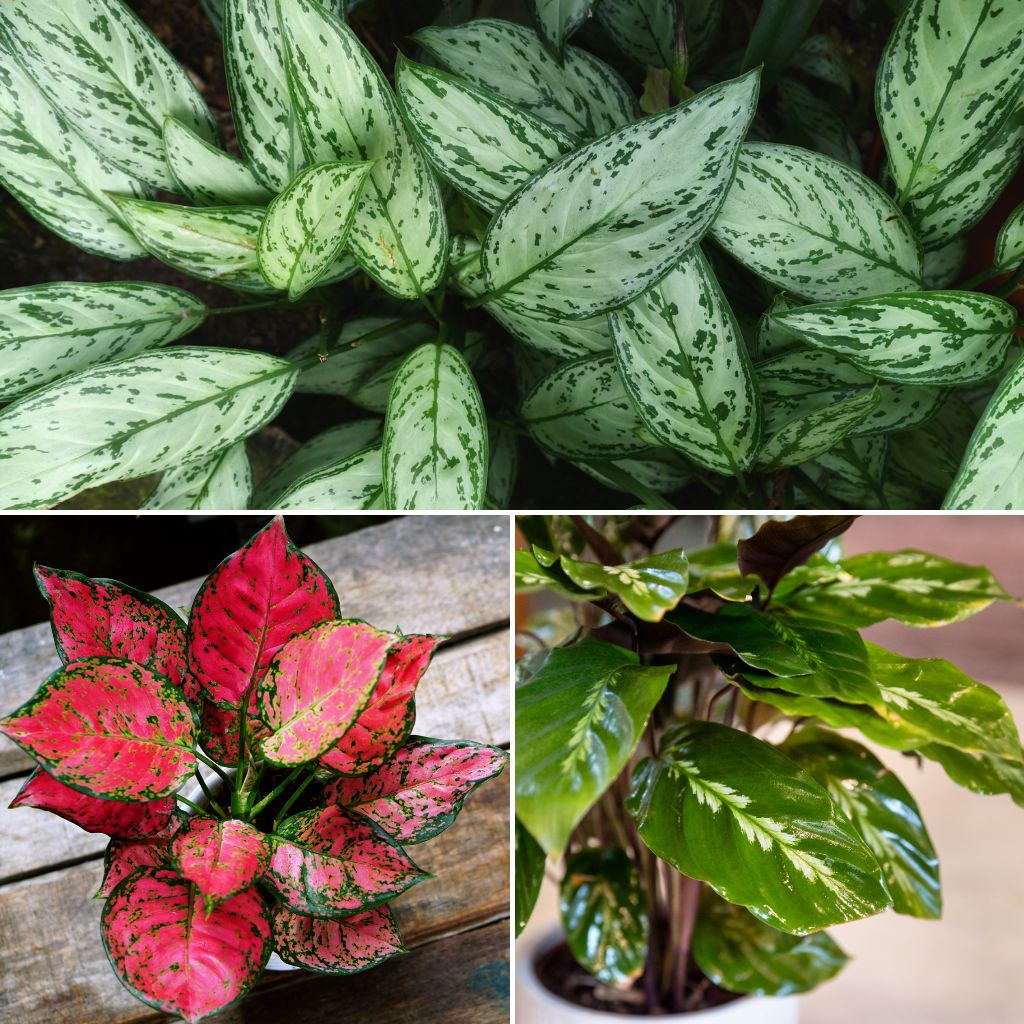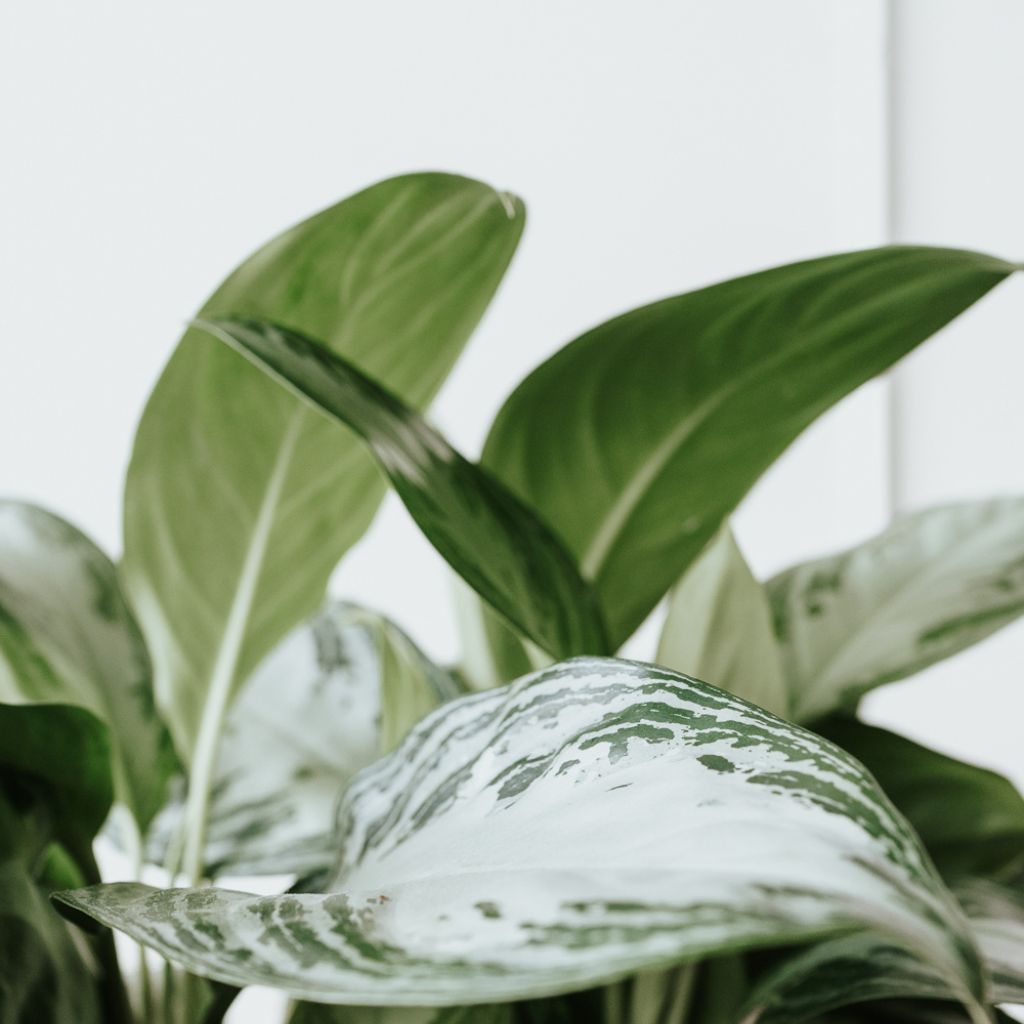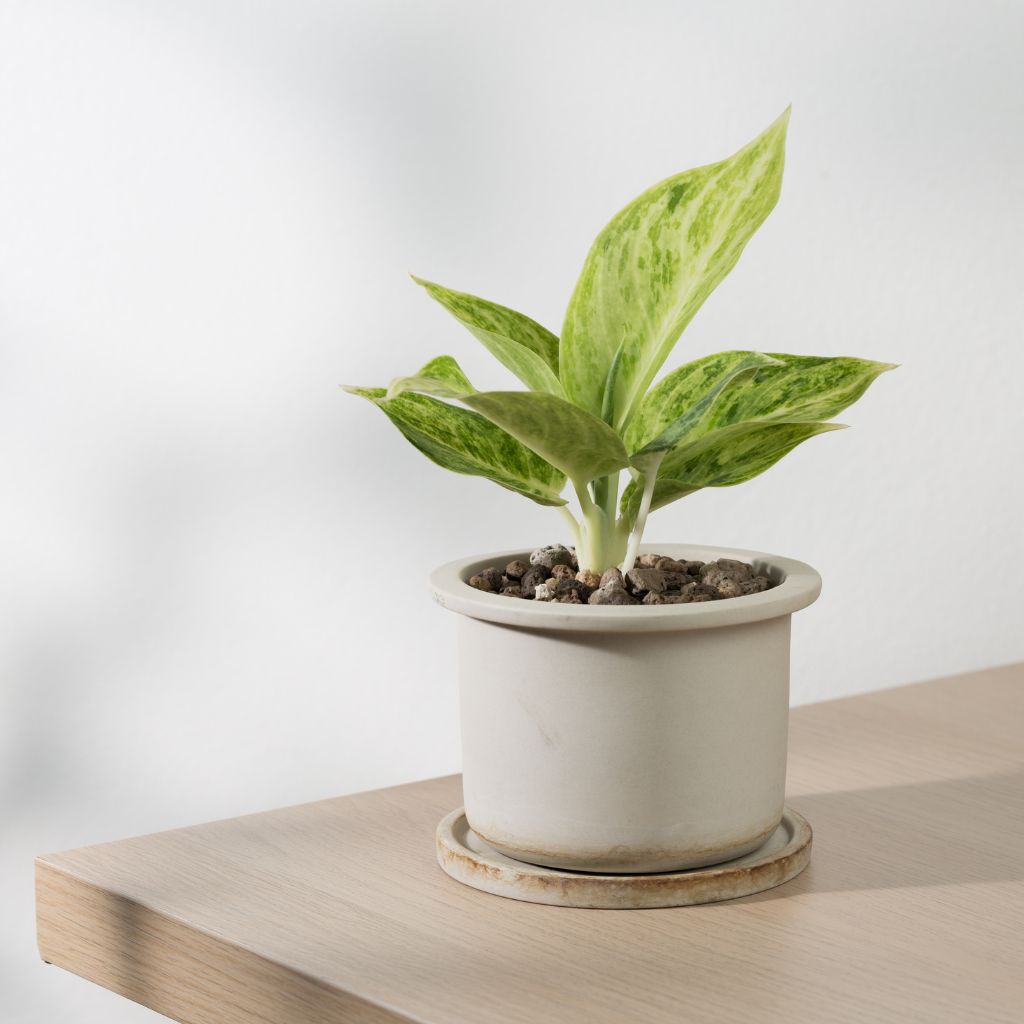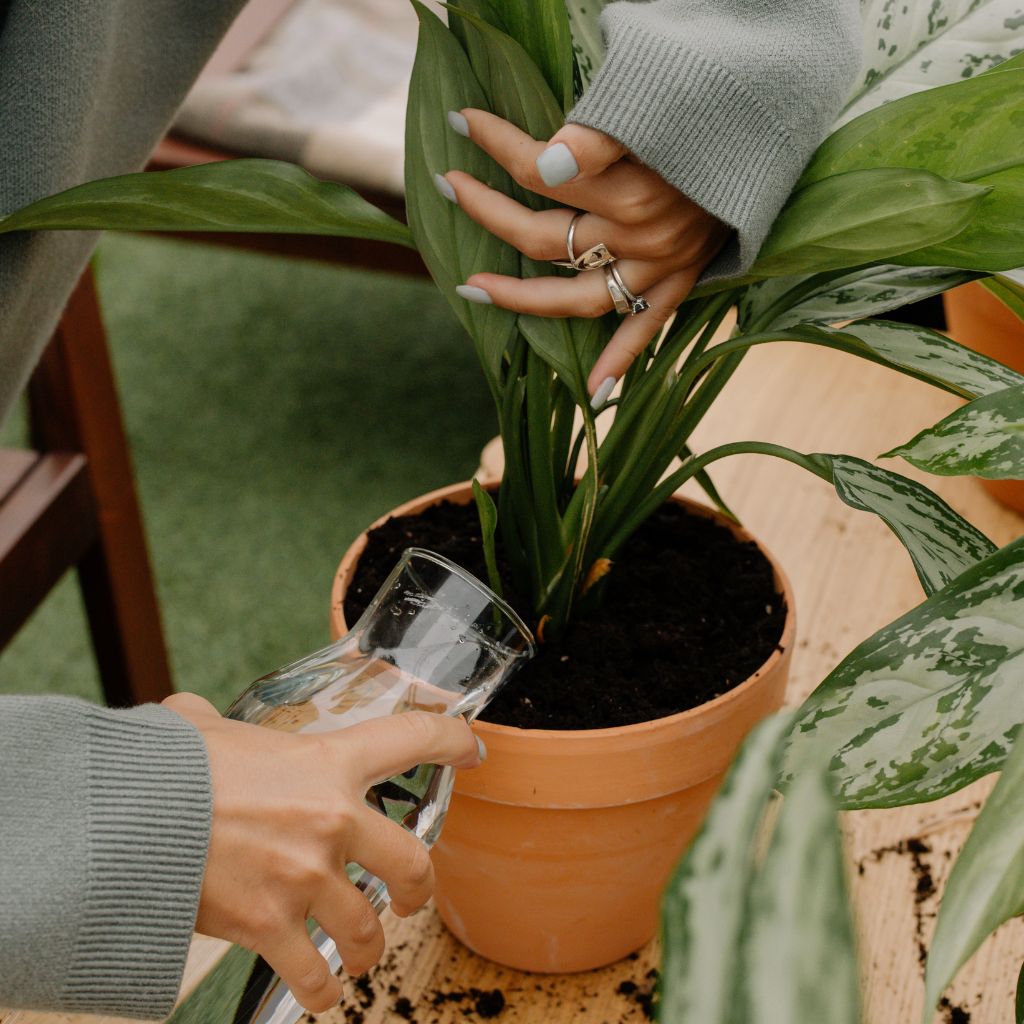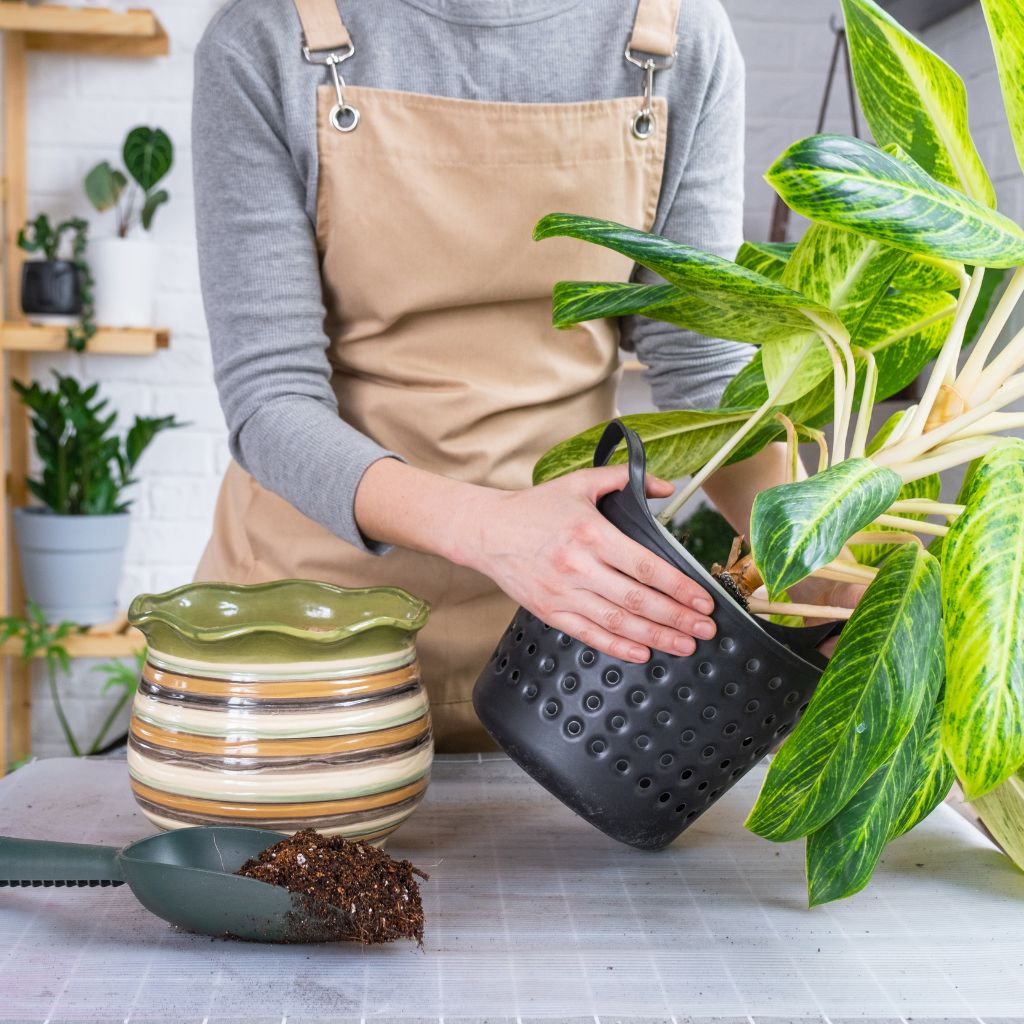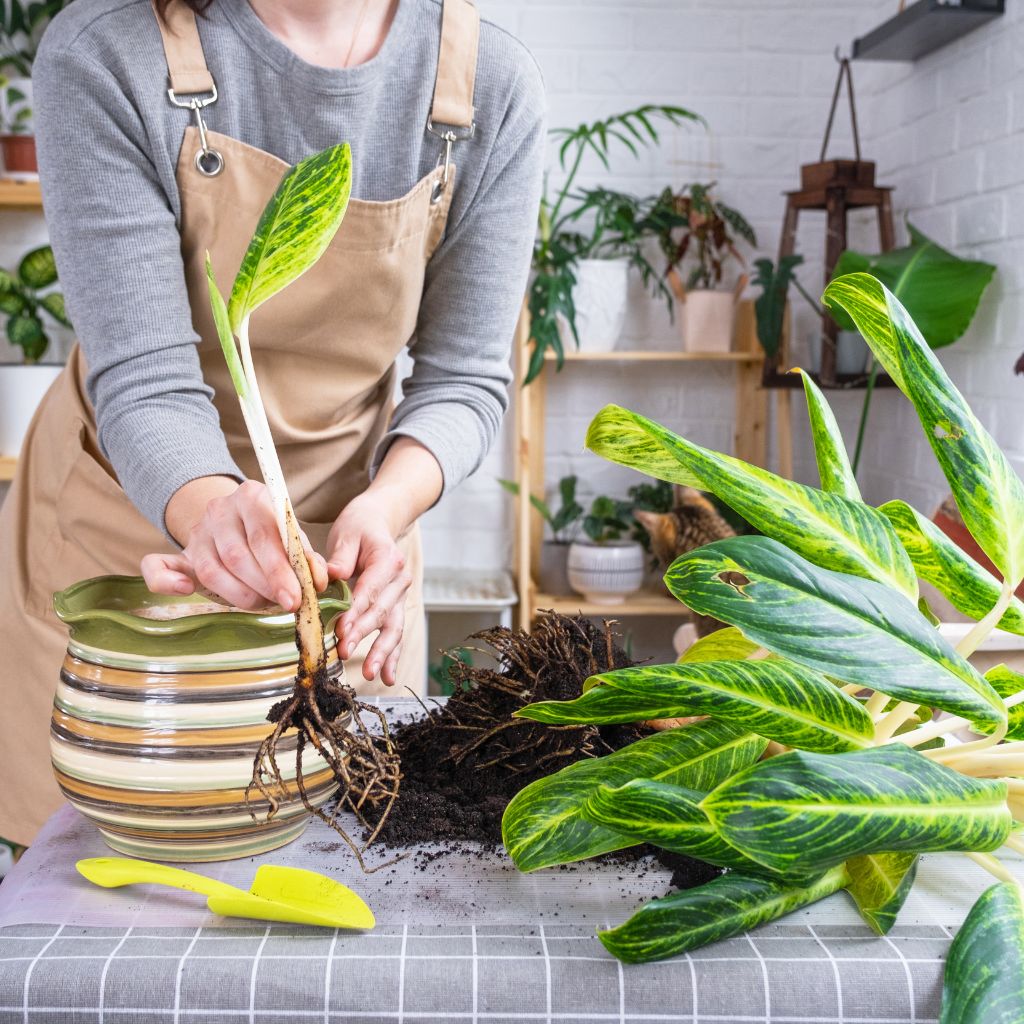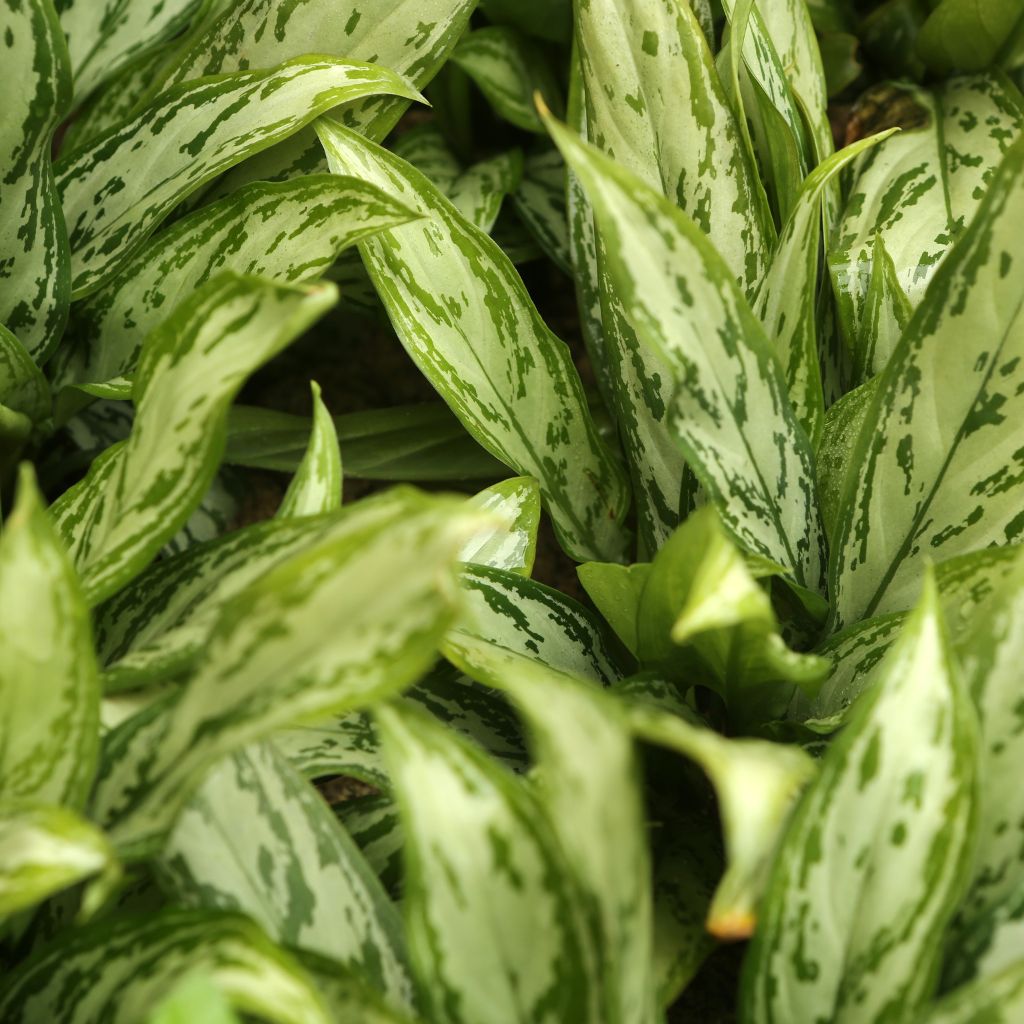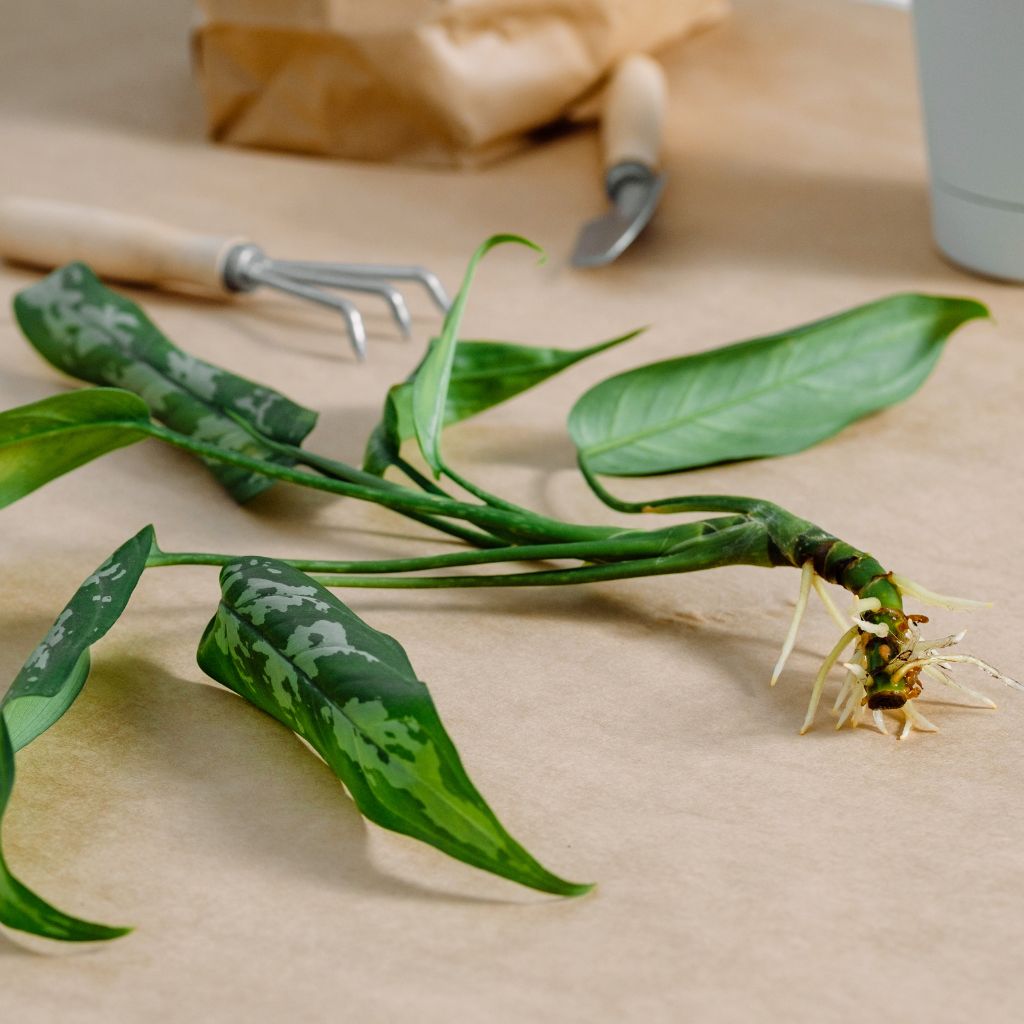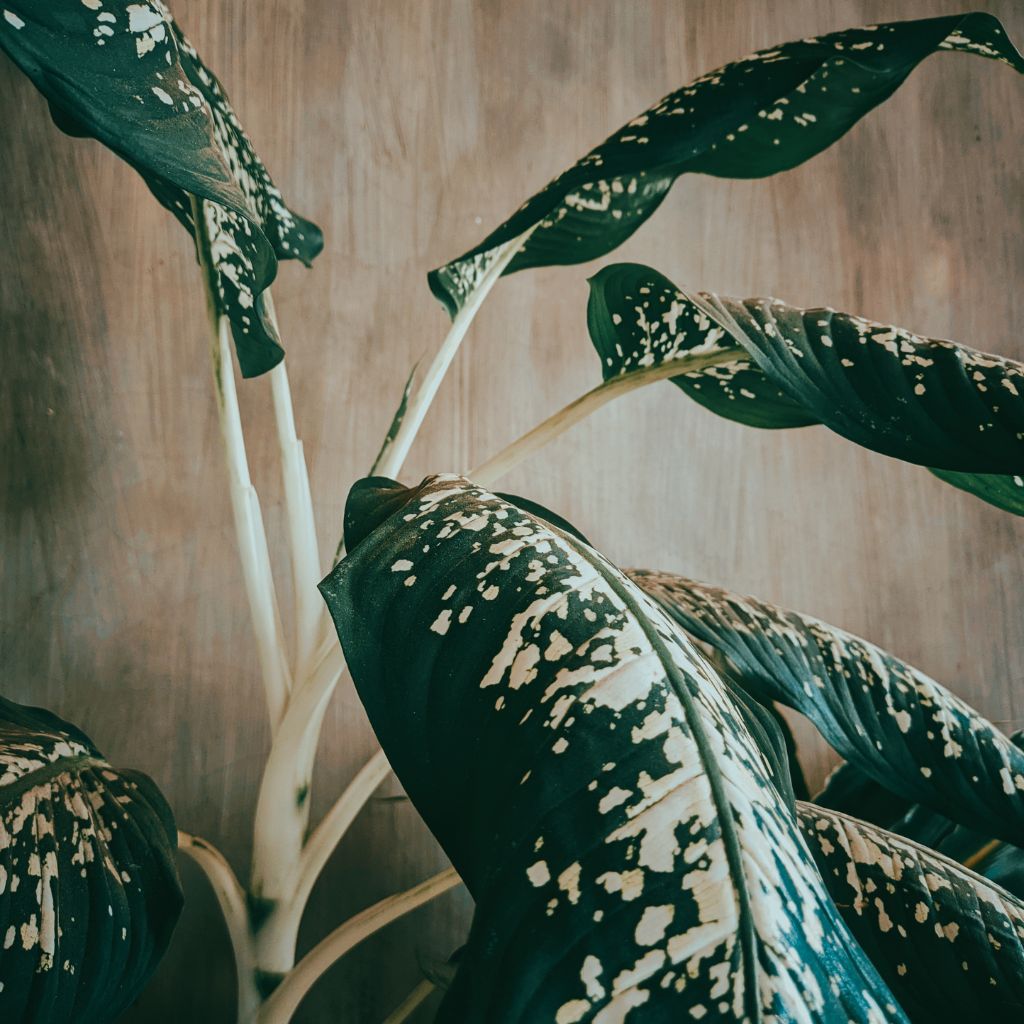If you’re looking for a low-maintenance plant to brighten up your indoor space, the Chinese Evergreen is a perfect choice.
This hardy plant thrives in low light conditions, making it ideal for any spot in your home or office.
These plants don’t demand much, yet they reward you with stunning, vibrant leaves. They’re also fantastic for improving indoor air quality, as they help filter out common household toxins.
Getting to Know Your Chinese Evergreen
Chinese Evergreen, or Aglaonema, is a popular indoor plant known for its attractive foliage and simplicity in care.
When choosing a variety, it’s key to consider the specific look and requirements of each type. Understanding its benefits and characteristics can help you appreciate and better care for this versatile houseplant.
Species Varieties and Selection
Chinese Evergreen comes in several varieties, each with unique features. Aglaonema Silver Bay showcases silvery-green leaves, while Aglaonema Red Emerald has vibrant red-tinted foliage. Choices like Aglaonema Maria display classic dark green leaves with silver patterns.
It’s important to select a variety that suits your interior design and light conditions. Varieties with darker leaves often tolerate lower light, whereas those with lighter or variegated leaves may need brighter, indirect sunlight.
Keep in mind the plant’s mature size to ensure it fits your space comfortably.
Here’s a quick comparison:
| Variety | Leaf Color | Light Requirement |
|---|---|---|
| Aglaonema Silver Bay | Silvery Green | Low to moderate light |
| Aglaonema Red Emerald | Red-tinted | Bright, indirect light |
| Aglaonema Maria | Dark Green & Silver | Low to moderate light |
Plant Characteristics and Benefits
Chinese Evergreen is cherished for its elegant and varied leaf patterns, ranging from dark green to silver and even red. The plant is relatively small, often growing around 1-2 feet in height, making it perfect for desktops or small spaces.
Benefits:
Low Maintenance: Easy to care for and can tolerate low light.
Air Purifier: Helps remove toxins from the air, improving indoor air quality.
Decorative Appeal: Its striking foliage adds a sophisticated touch to any room.
Chinese Evergreen is also quite resilient, thriving in various indoor conditions. It’s a great choice for both novice and experienced gardeners looking for a dependable and attractive plant.
Ideal Growing Conditions
To see your Chinese Evergreen thrive, consider the specifics of light, soil, temperature, humidity, and watering. Getting these right makes a huge difference in the health and growth of your plant.
Light and Location
Chinese Evergreens are adaptable to different light conditions. Ideally, they prefer bright, indirect light but can tolerate low light settings.
Avoid direct sunlight, which can scorch the leaves. Place your plant near an east or north-facing window for the best results.
If your home has low light, opt for a darker variety of Chinese Evergreen. Rotate the plant occasionally to ensure all sides receive light. When indoors, it’s key to avoid placing it in drafty areas or near air vents.
Soil and Potting Mix
The right soil is crucial for your Chinese Evergreen. Opt for a well-draining potting mix. A blend of peat, pine bark, and perlite or sand works well. This mix retains moisture without becoming waterlogged, preventing root rot.
Make sure the pot has drainage holes. Consider placing a layer of gravel at the bottom of the pot. This helps improve drainage. Re-pot your plant every 2-3 years to refresh the soil and allow for growth.
Temperature and Humidity
Chinese Evergreens enjoy warm, humid conditions. Keep temperatures between 65-80°F (18-27°C). Avoid exposing the plant to temperatures below 60°F (15°C) as it can cause damage. High humidity levels mimic their natural tropical habitat.
Use a humidity tray or a room humidifier if your home is dry. Misting the leaves regularly can also help. Position the plant away from cold drafts or sudden temperature changes, which can stress the plant.
Watering Schedule
Water your Chinese Evergreen moderately. Allow the top 1-2 inches of soil to dry out between waterings.
Overwatering can lead to root rot, so it’s better to err on the side of underwatering. During the growing season (spring and summer), water more frequently.
In fall and winter, reduce watering frequency. Use lukewarm water to avoid shocking the plant. Ensure any excess water drains out completely, preventing stagnant water in the pot. Regularly check the soil moisture and adjust as needed.
Planting and Repotting
When you’re ready to plant your Chinese Evergreen, focus on choosing the right container and following a detailed repotting process for the best results.
Choosing the Right Container
Size and Drainage: Pick a container that’s 1-2 inches larger in diameter than the current pot. Look for one with drainage holes to prevent root rot.
Material: Clay or terracotta pots are great for moisture control, but plastic pots work well too and are easier to move.
Depth: Ensure the pot is deep enough to accommodate the growing root system. Chinese Evergreens prefer a bit of breathing room for their roots.
Repotting Step-by-Step
Preparation: Gather all materials, including new potting soil, a trowel, and the new pot. Water your plant a day before to make handling easier.
Removal: Gently remove the plant from its current pot. Tap the sides and tilt it if needed.
Trimming and Inspecting: Trim off any dead or rotting roots. Inspect for pests or disease.
Placing: Add a layer of fresh soil in the new pot. Place the plant in and fill around it with soil, ensuring the root ball is covered. Press the soil lightly to eliminate air pockets.
Watering: Water thoroughly and allow excess to drain out. Place the pot in its usual spot and avoid direct sunlight for a day or two to help it adjust.
Ongoing Care and Maintenance
Regular care of your Chinese Evergreen ensures it stays healthy and vibrant. This includes proper fertilizing, grooming, and pest management.
Fertilizing Routine
Feed your Chinese Evergreen every 4-6 weeks during the growing season, which is spring through summer. Use a balanced, water-soluble fertilizer at half strength.
Too much fertilizer can burn the roots, so less is more. During the fall and winter, cut back on fertilizing, as the plant’s growth slows down.
Monitor the plant for signs of nutrient deficiencies, such as yellowing leaves. Always water the plant before applying fertilizer to avoid root damage. Tip: Opt for a fertilizer specifically designed for houseplants for best results.
Pruning and Grooming
Pruning helps maintain the shape and health of your Chinese Evergreen. Remove yellowing or dead leaves as soon as you notice them.
This not only improves appearance but also helps prevent disease. Use clean, sharp scissors to cut leaves close to the base.
Turn the plant occasionally to ensure even growth on all sides. If the plant becomes too large, consider propagating new plants from healthy cuttings.
Tip: Wipe the leaves with a damp cloth to keep them dust-free and encourage photosynthesis.
Pest and Disease Management
Chinese Evergreens are relatively pest-resistant but can occasionally suffer from spider mites, mealybugs, or scale. Regularly inspect your plant for signs of pests, such as tiny webs or sticky residue. If you spot pests, treat the plant with insecticidal soap or neem oil.
Keep the plant’s environment clean and avoid overwatering to prevent root rot and fungal issues. Tip: Isolate infested plants to prevent pests from spreading to other houseplants.
Regularly monitor and care for your Chinese Evergreen to keep it thriving year-round.
Propagation Techniques
When growing Chinese Evergreen, you have a couple of solid options to propagate your plants: stem cuttings and division. Each method has its own unique steps and considerations.
Stem Cuttings
Stem cuttings are a straightforward way to multiply your Chinese Evergreen. Start by cutting a healthy stem just below a node using a clean, sharp knife. Ensure the cutting is about 4-6 inches long and includes several leaves.
Remove the lower leaves to expose the nodes, as this is where new roots will develop. Place the cutting in water or moist soil. If you choose water, change it every few days to keep it fresh and oxygenated. In soil, ensure it’s consistently moist but not waterlogged.
Position the cutting in a location with indirect sunlight. Roots will typically begin to form within a few weeks. Once the roots are well-established, you can transfer the cutting to its permanent pot.
Division
Division is perfect if you already have a well-established Chinese Evergreen. Start by carefully removing the plant from its pot. Gently shake off excess soil to expose the root system.
Using your hands or a clean knife, separate the root clump into smaller sections, each with at least a few leaves and healthy roots. Be gentle to avoid damaging the roots.
Repot the separated sections in well-draining potting soil. Water them moderately to help the plants settle in.
Place the new pots in a location with filtered sunlight. Care for them as usual, and they should acclimate and start growing in their new containers within a few weeks.
